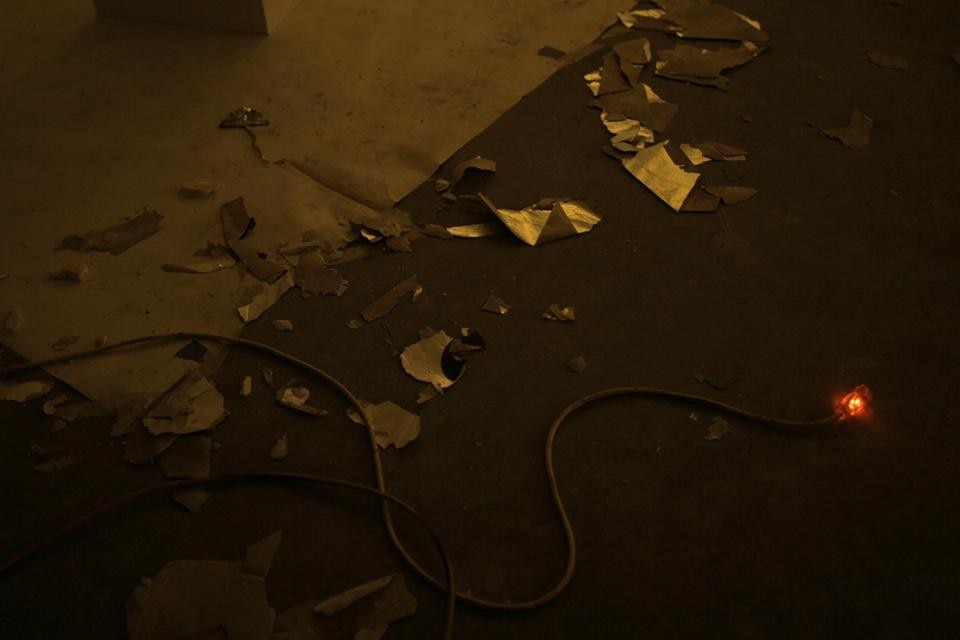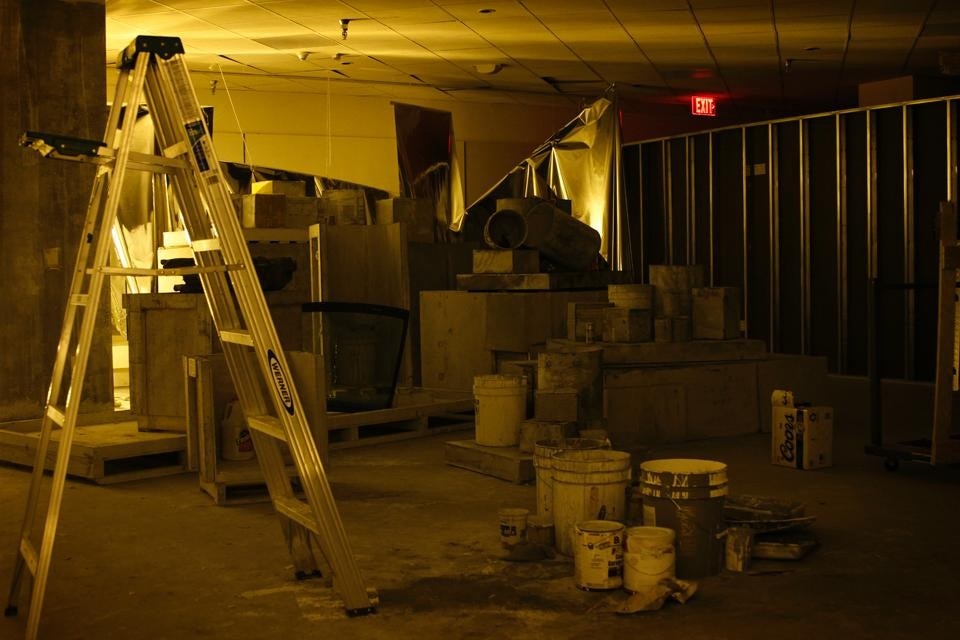Prior to the opening, The Betty Roberts Room is billed as featuring a number of intriguing though cryptic elements. Among them: A vibrating Mylar wall reflecting high-pressure sodium light across the gallery space; stacked-object sculptures, paintings, and prints all realized in grey-scale surface; paintings reminiscent of famed faux-painter Pierre Finkelstein, a 1986 graduate of the Van Der Kellen Painting Institute in Brussels; and a guided imagery soundtrack by Belleruth Naparstek, "noted psychotherapist, author and producer of the Health Journeys line of guided imagery audio programs."
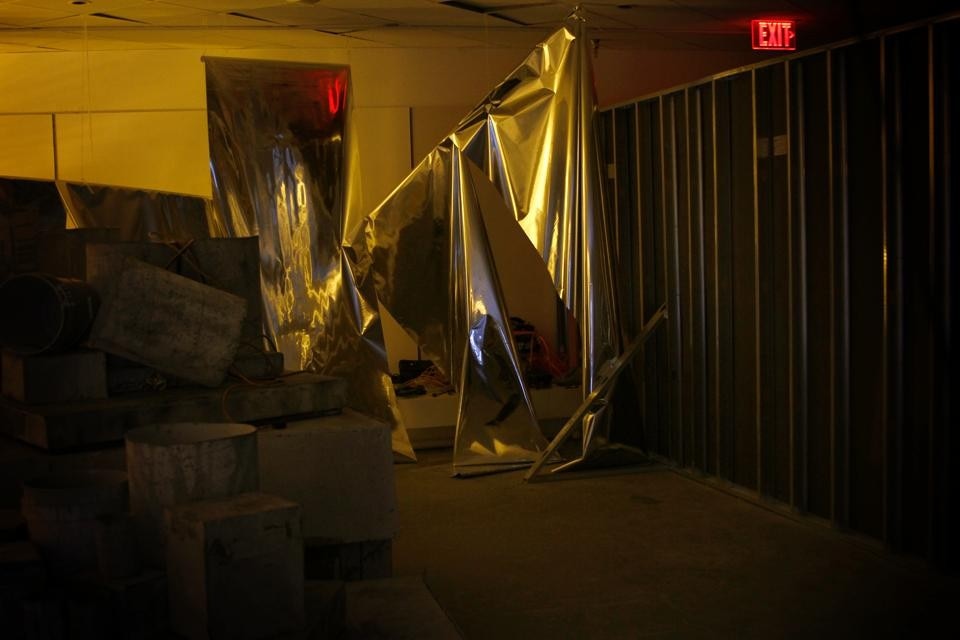
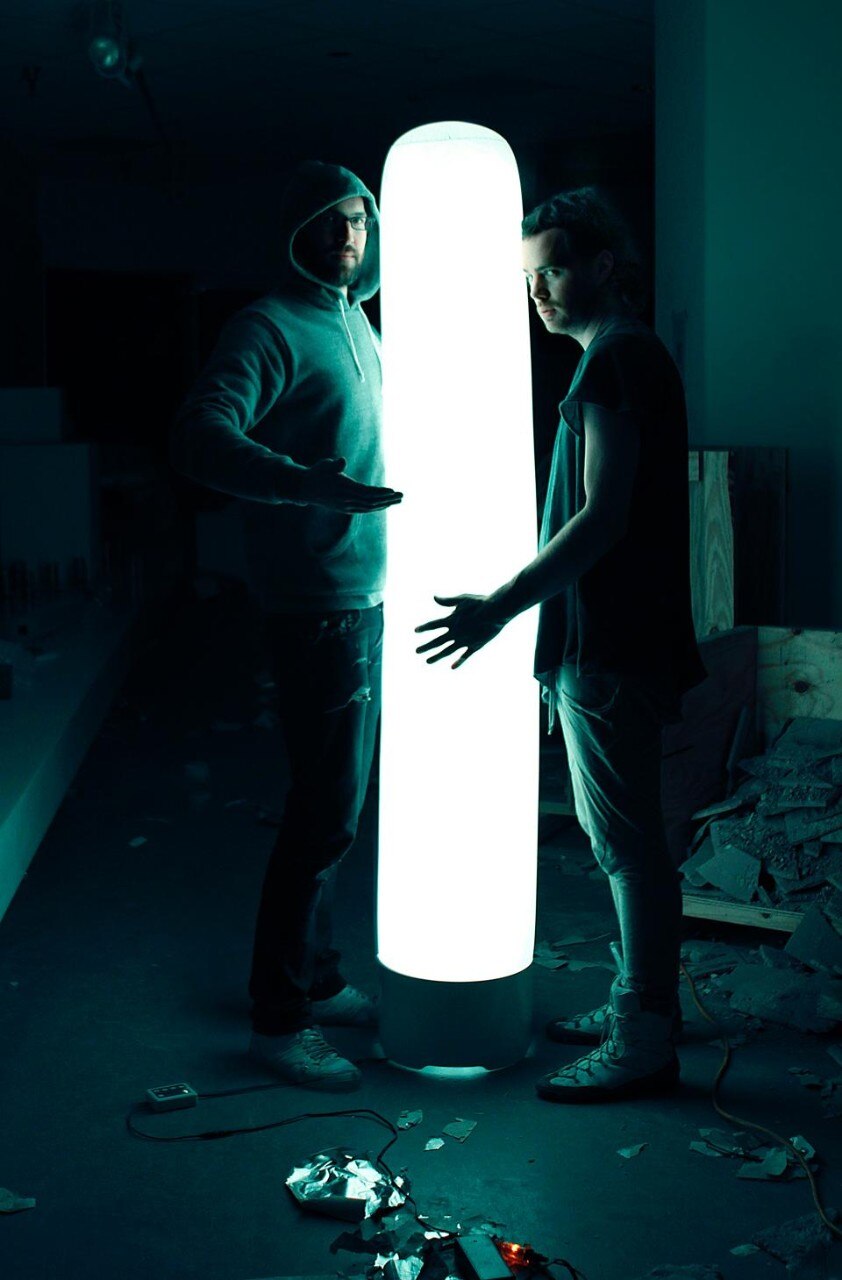
To think of The Betty Roberts Room as intentionally broken might be to give in to rationalization where there is no grounds for it — it's falling for a trick of the mind, a trick of the camera, or, worse yet, a trick of the artists. But failure to do so leaves one in a limbo of uncertainty and aggravation
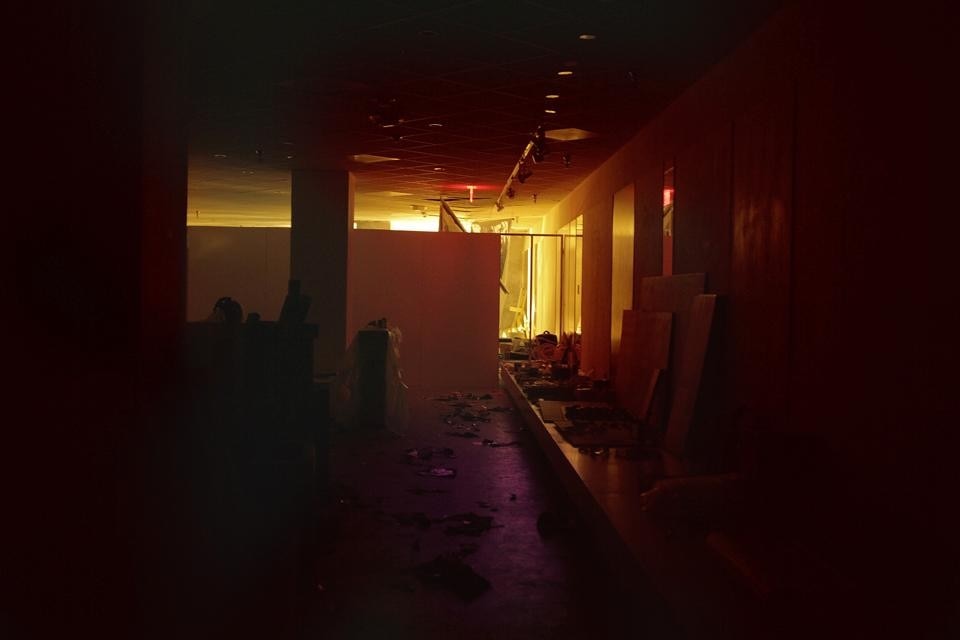
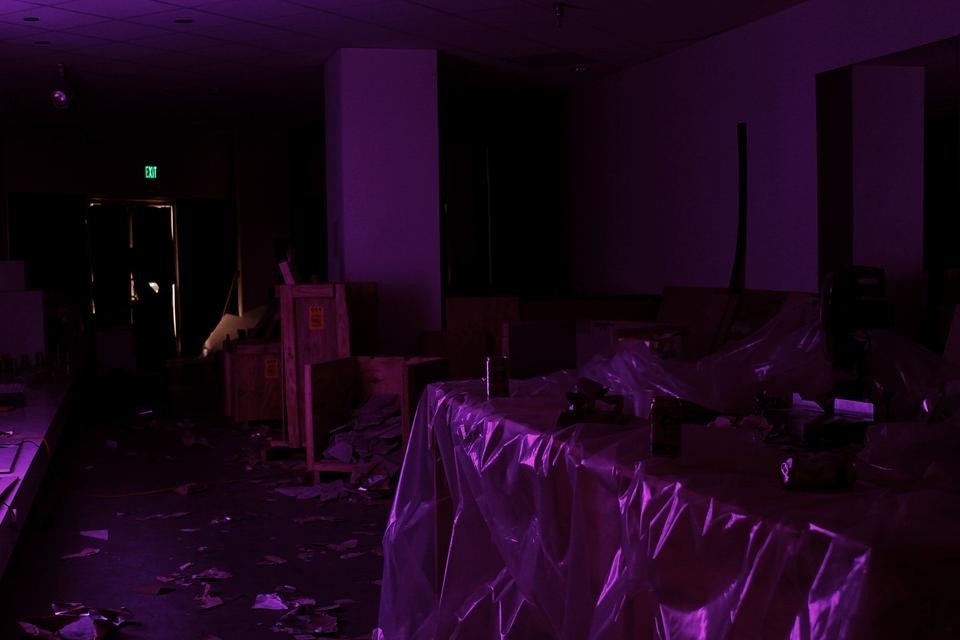
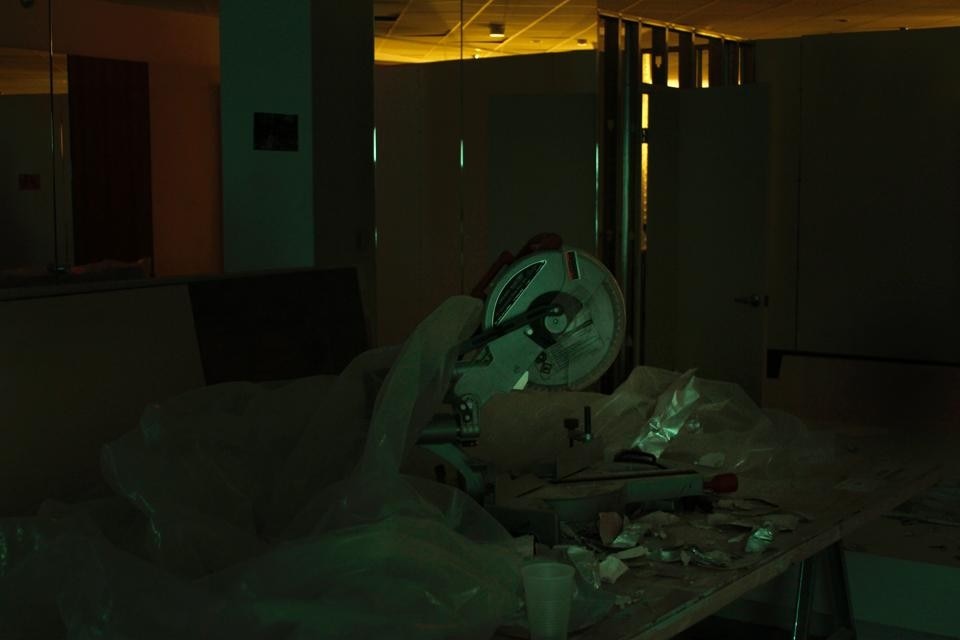
The Betty Roberts Room
Annie Wharton Los Angeles
8687 Melrose Avenue, Los Angeles
